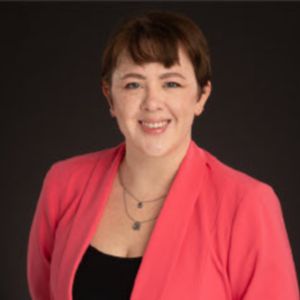St. Jude Family of Websites
Explore our cutting edge research, world-class patient care, career opportunities and more.
St. Jude Children's Research Hospital Home

- Fundraising
St. Jude Family of Websites
Explore our cutting edge research, world-class patient care, career opportunities and more.
St. Jude Children's Research Hospital Home

- Fundraising
Moving mountains to improve hematological care worldwide

An artistic rendering of health care providers assisting each other up a mountain side.
As you stare up toward the distant peak, you are filled with both trepidation and excitement. You look down, sliding your gaze from the heights above to your feet at the base. You have the right supplies, but still — you pause. The towering task before you seems insurmountable from below, but just as you start to doubt — your fellow climbers join you, strengthening your resolve for the work ahead.
Such was the viewpoint of the St. Jude Global Hematology program as its members began the journey of addressing nonmalignant hematological disorders around the world. The task was, and is, as challenging as scaling a mountain: Sickle cell disease alone has approximately 500,000 new cases each year. Other hematological diseases, such as thalassemia, hemophilia and bone marrow failure, are similarly prevalent. But like a climber at the foot of a mountain, the only way to begin is by taking that first step.
The lay of the land: How the Global Hematology program took shape
The mission of St. Jude Global Hematology is to advance knowledge of nonmalignant catastrophic blood disorders worldwide through research, technology and organizational skills, ultimately enhancing survival and outcomes. It aims to create a world where every young person with such a disorder receives specialized care, leading to a prolonged and meaningful life. To bring such a program to fruition requires massive coordination, creating collaborations between research institutions and hospitals.
When Carlos Rodriguez-Galindo, MD, St. Jude executive vice president, Department of Global Pediatric Medicine chair and St. Jude Global director, launched the Global Hematology program in 2021, he intended it to encompass both cancer and nonmalignant hematologic disorders. Emulating the approach of other St. Jude Global endeavors, the team decided to demonstrate the feasibility of their approach with blood cancers and then expand those efforts into nonmalignant blood disorders once the program established its footing.
As Global Hematology expanded, their focus shifted toward sickle cell disease. Sickle cell disease is a hereditary condition affecting red blood cells’ shape and ability to pass through smaller blood vessels. Approximately 500,000 babies are born with sickle cell disease each year, although most patients in low- and middle-income countries remain undiagnosed until they experience symptoms. The program needed a new leader, and on January 1, 2023, Jane Hankins, MD, left the Department of Hematology to join the Department of Global Pediatric Medicine as the Global Hematology program director.

Jane Hankins, MD, shows her support for sickle cell disease awareness and global efforts to address the disease.
“I had been in hematology for 17 years. I felt like it was time for me to get out of my comfort zone and do something new,” Hankins said. “The first things we thought about were the program’s strategic priorities. The mission has to guide everything we do. I felt like I needed a North Star because otherwise I would be lost.”
Once the team examined the problem through the lens of the mission, their path up the proverbial mountain became clearer.
A vast and varied landscape: Collaborating to treat hematological diseases abroad
Outcomes for sickle cell disease vary depending on myriad factors, including training for health care professionals, regular access to resources and support from local governments. Some countries have an extremely high mortality rate, with children dying from health complications related to the disease before age 5. Others, such as Brazil, have improved local care, so approximately 80% of their patients with sickle cell disease survive to adulthood. Their challenge has been helping patients transition from pediatric to adult care.
St. Jude already has a transition program for patients with sickle cell disease treated at the hospital in Memphis, giving the Global Hematology team a map to follow with their Brazilian collaborators.
“We’ve learned a lot about treating sickle cell disease, and we’re good at preparing adolescents to care for themselves. By the time they reach adulthood, they’re primed to navigate the adult health care system, and we also prepare the adult health system to receive these patients. We have that down to a science here in Memphis,” explained Hankins.
However, implementing such a program in a new setting is not as simple as copying the St. Jude model. There are local considerations, including the existing infrastructure, personnel training and cultural differences. To do this work, the team collaborated with Washington University in St. Louis and two hospital systems in Rio de Janeiro and São Paulo to build a pilot program, which has already garnered attention from the Brazilian Ministry of Health.
Hankins and her Brazilian colleagues presented their plans for the pilot program at a conference in 2023 and were met with enthusiasm from the attendees, many of whom expressed a strong desire for such a program in their own regions. Recognizing the vital need for adult sickle cell transition care nationwide, the Ministry of Health in Brazil requested the team’s guidance to make that program a reality.
“The Ministry of Health in Brazil asked for our help developing a questionnaire for other institutions,” said Hankins. “We’re collecting data to get a landscape evaluation of what the picture of adult sickle cell transition care is in Brazil: Do the health care workers think this is a priority, and would they be willing to work to help fix and find solutions?”
The data from this questionnaire will help inform the next steps up the summit for the Global Hematology team and their collaborators.
Because of the work they had already done in Brazil, whose official language is Portuguese, the team is starting to assist another Portuguese-speaking partner: Mozambique.
While sickle cell disease is the program’s primary focus, other hematological disorders also require attention. In such cases, building solid relationships with collaborators to share training and education goes a long way to energize and empower local care providers. Meanwhile, efforts to integrate those disorders into Global Hematology’s toolkit continue.

Ombeni Idassi, Global Hematology program coordinator
“We are working to incorporate all hematologic diseases as we create our tools,” explained Ombeni Idassi, Global Hematology program coordinator. “This is why these partnerships are important; the relationships we build in these collaborations help solidify plans for work in those other diseases. We’re making connections so that when we do directly address it, we already have the tools we need.”
Crossing the crevasse: Using implementation science to address gaps in care
Before embarking on a journey — perilous or otherwise — it is crucial to understand the route you plan to take and any hazards that might impede your progress. For the Global Hematology team, implementation science gives a topographical view of their terrain. Implementation science is a field of research that studies methods to promote systemic uptake in research findings and routine practice to improve the quality and efficacy of health services.
“Implementation science begins with characterizing the problems,” explained Hankins. “First, what is the gap in care? Children with sickle cell disease are dying before age 5. That’s a huge gap: high mortality. The next step is to characterize the problem barriers and facilitators. Why are kids dying? What’s protecting them? What’s not protecting them? What’s getting in the way? We want to understand why the gap exists and then match solutions to the problems.”
This approach provides a holistic picture of how to implement proven solutions in a new setting. It examines infrastructure (what resources are available and what is needed), assesses the sustainability of existing solutions, offers adjustments for the new context and considers cultural differences that might impact solutions.

Nick Faris, Global Hematology program manager
“We have both the benefit and the challenge of learning where the obstacles are from someone else’s experience. We have this common understanding about what we can do or what needs to be done to close the gaps in the quality of care for kids with sickle cell disease,” said Nick Faris, Global Hematology program manager. “Our challenge is figuring out how to translate existing tools from the oncology setting into the nonmalignant setting.”
Human connections: The ties that drive the work forward
What makes a good climbing guide? Experience on rugged terrain, proper certifications, a cool head under pressure — all of these would certainly make for solid qualifications. What makes a great climbing guide? Someone who is deeply invested in their charges and understands that the toughest climbs cannot be achieved alone. The Global Hematology team intrinsically understands that people are at the center of their work and that, while their expertise and experience are invaluable, the scale of global pediatric medicine’s need requires a vision that is bigger than oneself.
“It’s deeply meaningful to take on something that is impossible for me to accomplish myself,” enthused Faris. “What’s so inspiring about being a part of the Global Hematology team is that we recognize our individual limitations but find great power in working together to accomplish something that none of us could do on our own.”
While the program’s work extends beyond the self, for Hankins and Idassi, the journey is also profoundly personal. Their ties to the communities they serve propel them forward, inspiring them to continue even when they feel most overwhelmed.
“The fact that I’m Brazilian helps me be accepted and creates trust among our collaborators. That is an emotional component for me,” explained Hankins. “I feel like I can make an impact that I can immediately see because I’m one of them but also have access to knowledge, skills and resources from St. Jude.”
“I’ve always had the desire to help kids in some element, and, because I’m African and as a son of an immigrant in this country, I’ve always had an inkling and a want to help people with a global impact,” said Idassi. “The fact that I get to work on the Sub-Saharan African projects and know there will be an impact feels amazing.”
From the grand to the granular: No pebble is insignificant
From its inception, the Global Hematology team has looked to their own mission statement and the St. Jude strategic plan as their North Star. The emphasis on treating catastrophic childhood diseases, such as sickle cell disease, and making a global impact have particularly resonated with the team and guided their approach to their work with their global collaborators.
“Everything we do is aligned with the strategic plan of St. Jude. We are very intentional about fulfilling the St. Jude mission and the work we do,” said Hankins.
The trek up the mountain may be long, and the impact may take time to manifest on a large scale, but each step brings them closer to that goal. In the meantime, they find beauty in the singular, in each pebble that forms the path.
“Thinking about the ability to pursue something so grand,” said Faris, “but for it to have such a granular impact on a single individual — the work we’re doing in Brazil or Mozambique is going to affect what happens across the country, but it will also affect what happens for each individual child.”






